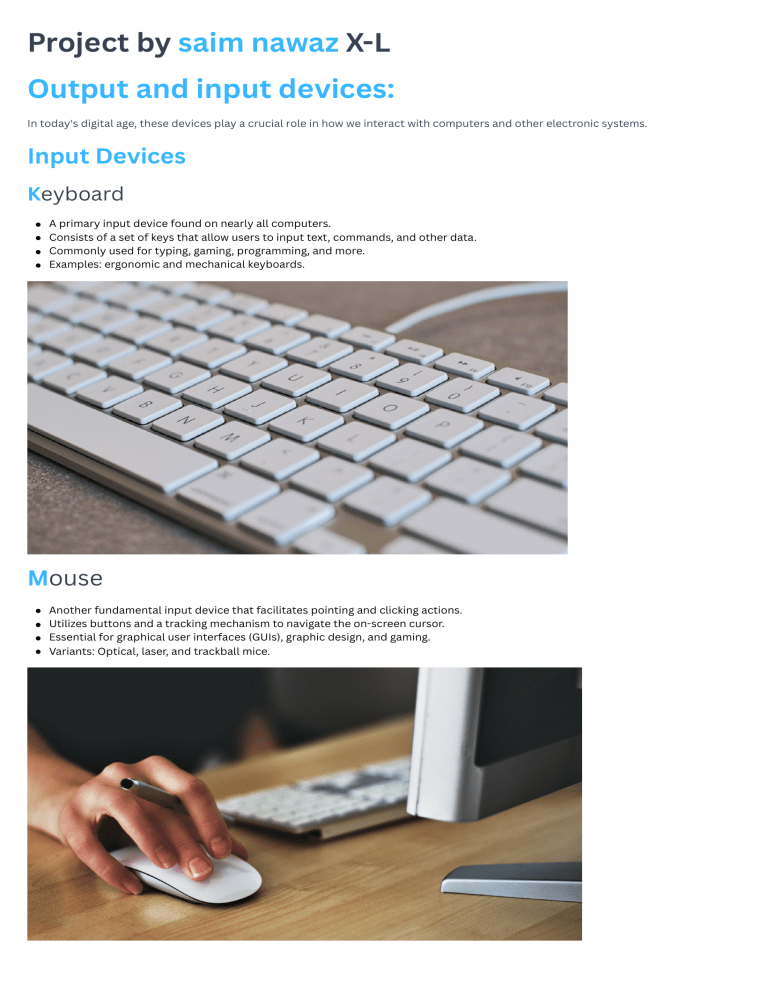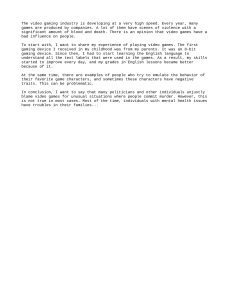
Project by saim nawaz X-L Output and input devices: In today's digital age, these devices play a crucial role in how we interact with computers and other electronic systems. Input Devices Keyboard A primary input device found on nearly all computers. Consists of a set of keys that allow users to input text, commands, and other data. Commonly used for typing, gaming, programming, and more. Examples: ergonomic and mechanical keyboards. Mouse Another fundamental input device that facilitates pointing and clicking actions. Utilizes buttons and a tracking mechanism to navigate the on-screen cursor. Essential for graphical user interfaces (GUIs), graphic design, and gaming. Variants: Optical, laser, and trackball mice. Touchscreen A versatile input device that responds to touch gestures. Used in smartphones, tablets, kiosks, and interactive displays. Allows for intuitive interactions like tapping, swiping, pinching, and rotating. Output Devices Monitor A prominent output device that presents visual information. Comes in various sizes, resolutions, and technologies (LCD, LED, etc.). Used for tasks ranging from browsing and content creation to video editing and gaming. Printer Converts digital content into tangible hard copies. Available in inkjet, laser, and dot matrix variants. Used for documents, photos, labels, and more. 3D printers are gaining popularity for creating three-dimensional objects. Speaker An essential audio output device that produces sound. Utilized for listening to music, watching videos, and receiving auditory notifications. Comes in various types, including built-in speakers, external speakers, and surround sound systems. Conclusion Input devices allow us to communicate with computers and devices effectively. Output devices provide us with the results of our interactions in various forms. As technology evolves, new and innovative input and output devices continue to shape the way we interact with the digital world.





